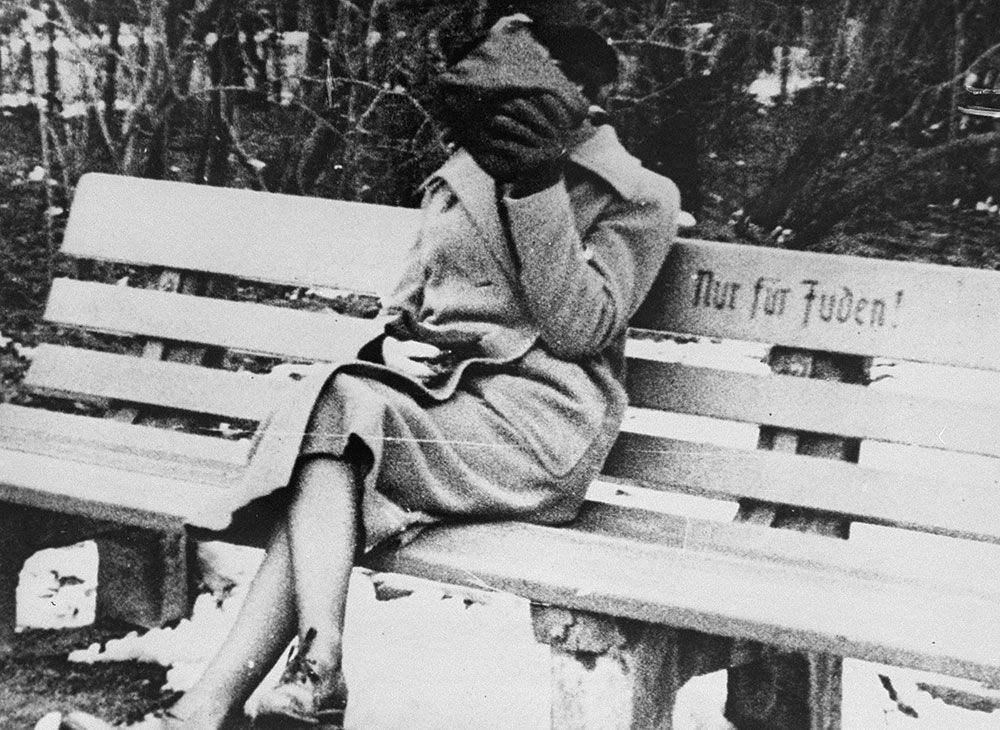This activity will help students learn to fight prejudice. Students will divide into groups and research one interviewee in the Museum’s Voices on Antisemitism series. While the rest of the class serves as journalists and reporters at a press conference, each group will present what they have learned about their individual and the work that he or she has carried out. The journalists and reporters will then ask questions.
Ray Allen
 Ray Allen has visited the United States Holocaust Memorial Museum several times since it opened; each time he brings a different friend, teammate, or coach. The Museum, Allen says, has a message for everyone and lessons about prejudice that are universally relevant. Learn more
Ray Allen has visited the United States Holocaust Memorial Museum several times since it opened; each time he brings a different friend, teammate, or coach. The Museum, Allen says, has a message for everyone and lessons about prejudice that are universally relevant. Learn more
danah boyd
 As a researcher for Microsoft and a fellow at Harvard's Berkman Center for Internet & Society, danah boyd looks at how young people interact with social network sites, like Facebook and MySpace. Her research has led her to develop interesting observations about the nature of hate speech on the internet and tactics for combating it. Learn more
As a researcher for Microsoft and a fellow at Harvard's Berkman Center for Internet & Society, danah boyd looks at how young people interact with social network sites, like Facebook and MySpace. Her research has led her to develop interesting observations about the nature of hate speech on the internet and tactics for combating it. Learn more
Judea Pearl
 Judea Pearl, father of slain journalist Daniel Pearl, describes himself as a soldier battling the tsunami of hatred that has defined the twenty-first century. Learn more
Judea Pearl, father of slain journalist Daniel Pearl, describes himself as a soldier battling the tsunami of hatred that has defined the twenty-first century. Learn more
Cornel West
 Cornel West encourages us to acknowledge our prejudices, rather than to pretend that they don't exist. He says that we must then formulate strategies to move to a higher moral ground. Learn more
Cornel West encourages us to acknowledge our prejudices, rather than to pretend that they don't exist. He says that we must then formulate strategies to move to a higher moral ground. Learn more
Xu Xin
 Professor Xu Xin has spent 40 years at Nanjing University—as an undergrad, a grad student, and currently as director of the Glazer Institute of Jewish Studies. He teaches new generations of Chinese students about Jewish history, culture, and the lessons of the Holocaust. Learn more
Professor Xu Xin has spent 40 years at Nanjing University—as an undergrad, a grad student, and currently as director of the Glazer Institute of Jewish Studies. He teaches new generations of Chinese students about Jewish history, culture, and the lessons of the Holocaust. Learn more
Methodology
- Divide students into five groups.
- Assign a podcast episode to each group.
- Have the groups research the person assigned to them, paying close attention to what he or she is doing in a contemporary sense to fight prejudice.
- Students should consider who the individual is, where he or she lives, what his or her motivation is to fight prejudice and what methods this person uses to carry out his or her work.
- After completing their research, students should write a 3-5 minute speech in which they present what they have learned about the person assigned to them and ways in which they can now fight prejudice.
- While each group presents, the rest of the class should be developing questions to ask in their role as journalists and reporters.
- After each presentation, the audience should be given a chance to ask their questions and the group presenting should use the resources they have to best answer each question.
Recommended Research Resources
Museum Resources
Nazi Racism (Condensed overview of Nazi racism and its victims from the Museum’s The Holocaust: A Learning Site for Students using text, historical photographs, maps, images of artifacts, and audio clips to provide an overview of the Holocaust)
Holocaust Encyclopedia articles:
- Antisemitism
- Racism
- Racism: An Overview
- Indoctrinating Youth
- Anti-Jewish Legislation in Prewar Germany
- Antisemitism in History: Racial Antisemitism, 1875-1945
- Blacks during the Holocaust
Additional Online Resources Related to Fighting Prejudice
- Anti-Defamation League (Fights antisemitism and all forms of bigotry in the US)
- Daniel Pearl Foundation (Promotes cross-cultural understanding through journalism, music, and innovative communications.)
- The Foundation for Ethnic Understanding (A national non-profit dedicated to strengthening relations between ethnic communities.)
- Interfaith Youth Core (Builds mutual respect and pluralism among young people from different religious traditions by empowering them to work together to serve others.)

